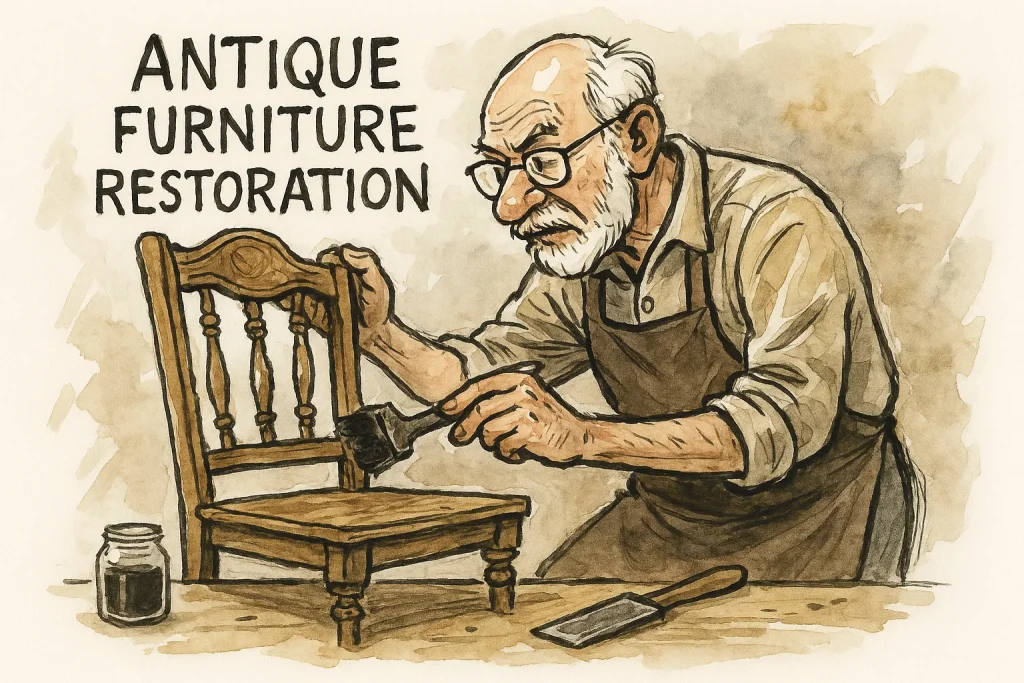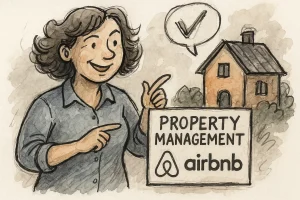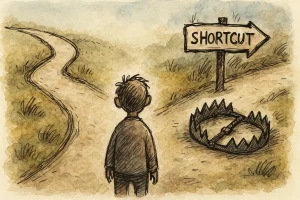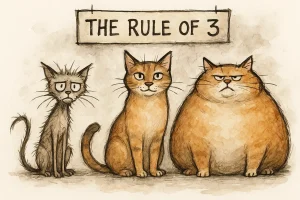
Antique furniture restoration may seem like a simple market, but it’s a rapidly growing sector that attracts entrepreneurs and investors looking to explore a high-value niche that goes beyond mere restoration. If you’re considering entering this market, or if you’re already in the industry, it’s essential to understand the details that make this business promising. In this article, we will explore how antique furniture restoration can be a profitable investment, how it works in practice, reasons to invest, and strategies to make your restoration business stand out in a growing and full-of-potential market.
Market Description
The antique furniture restoration market is closely tied to two major trends that have gained strength in recent years: the appreciation of vintage items and the growing concern for sustainability. As consumers become more aware of the environmental impact of overconsumption, furniture restoration gains relevance, offering a way to reuse and preserve unique and valuable pieces.
Moreover, antique furniture carries stories and an aesthetic appeal that many consumers seek to beautify their homes or commercial spaces. The demand for restored and customized furniture has been growing in several parts of the world, especially in markets where vintage design and quality craftsmanship are highly valued.
Furniture restoration is not just a preservation practice; it’s also a profitable business opportunity. With the increasing interest in customized furniture and the scarcity of authentic products, the restoration market has become a sought-after niche, attracting both residential and commercial clients.
How the Business Works
Antique furniture restoration is not limited to merely restoring a damaged piece. It involves a detailed and artistic process that may include repairs to wood, refinishing, reupholstering, and even changes to the original design to meet contemporary needs and tastes. Here’s how the restoration process generally works:
- Receiving the Furniture: The first step is client consultation, where the professional evaluates the piece to be restored. This can happen through an in-person visit or, in some cases, through photos sent online.
- Evaluation and Diagnosis: After receiving the item, the restorer conducts a thorough evaluation of the furniture’s condition, identifying damage, wear, and possible structural issues. At this point, the approach is also defined—whether parts need replacing, structural repairs are necessary, finishes need renewing, etc.
- Budgeting and Negotiation: After the evaluation, a budget is created, detailing the cost of the work, the materials needed (wood, paints, varnishes, fabrics, etc.), and the delivery time. The budget should be transparent, justifying each item, building trust between the restorer and the client.
- Executing the Restoration: This phase involves the manual labor of restoration. The restorer may sand the wood, touch up or replace damaged parts, restore or modify upholstery, apply new layers of paint or varnish, and even alter the original design as needed or per the client’s taste.
- Completion and Delivery: Once the work is finished, the furniture is delivered to the client. The restorer may offer a warranty on the services performed and make any final adjustments if the client has last-minute requests.
- Follow-up and Client Retention: After delivery, maintaining a relationship with the client is crucial to ensure satisfaction with the work. Good service and continuous care can lead to recommendations and new contracts.
Why Invest in This Business?
The antique furniture restoration market may not seem glamorous at first glance, but it offers several advantages that make it an excellent opportunity for those seeking a low-cost startup with high profitability potential. Here are some reasons to consider investing in antique furniture restoration:
- High Demand for Custom and Sustainable Products: The demand for restored furniture has increased as people become more conscious of sustainability and the need to avoid waste. Restored furniture is unique and often of high quality, attracting consumers who seek exclusivity and history.
- Niche Market with Little Competition: While the furniture market is vast, the antique furniture restoration niche is still relatively untapped, providing an opportunity for entrepreneurs who specialize in this segment.
- Low Initial Investment and High Added Value: The cost to start a restoration business is relatively low, especially if you already have skills in carpentry or design. With good planning, you can operate with a small initial investment and begin generating profits quickly.
- Significant Profitability: The value of restored furniture can be much higher than that of new furniture, especially if it’s a historically or aesthetically valuable piece. Prices can vary depending on the work required and the sentimental value the client places on the furniture.
- Emotional Value: Antique furniture often carries sentimental value for clients. This factor creates an emotional connection that can justify a higher price and provide a satisfying experience for both parties.
Business Analysis Table
| Criteria | Rating (1 to 5) | Comments |
|---|---|---|
| Perceived Value by Clients | 5 | Restored furniture has high perceived value, especially rare or historical pieces. |
| Knowledge Level Required | 4 | Technical and artistic knowledge is necessary, but with training and practice, it can be learned. |
| Initial Investment Level | 2 | Initial costs are relatively low, mainly for tools and materials. |
| Potential Profitability | 5 | The antique furniture market offers high profit margins, especially for rare or high-value items. |
| Growth Potential | 4 | The sector is growing, with increasing demand for customization and sustainability. |
| Customer Acquisition Costs | 3 | Word-of-mouth marketing and building a good reputation are key, but costs can be managed with digital strategies. |
| Risks and Challenges | 3 | There’s a risk of irreversible damage to furniture, but it can be minimized with skill and care. |
Strategies to Enter the Market
- Invest in Specialization: Specializing in a specific type of furniture (e.g., antique pieces or exclusive design furniture) can help you stand out in the market and attract a loyal audience.
- Offer an Online Portfolio: Showcasing before-and-after pictures of your projects in an online portfolio can be a great way to attract new clients. Use social media like Instagram to display the restoration process.
- Partnerships with Interior Designers and Furniture Stores: Establishing partnerships with professionals in the design field can expand the reach of your services and open doors to large contracts.
- Focus on Sustainability: Emphasize the sustainability of your work and the benefits of repurposing furniture to attract conscious consumers and gain a competitive edge.
Practical Tips and Tools
- Essential Tools: Invest in good carpentry tools and quality materials to ensure durable and aesthetically pleasing restorations.
- Time Management: Use project management software to organize deadlines and avoid delays.
- Customer Service: Always maintain clear communication with clients and provide personalized service for each project.
Conclusion
Antique furniture restoration is a growing market with great opportunities for entrepreneurs looking for a low-entry cost sector with high profitability and significant added value. With the increasing demand for sustainable and customized products, this niche offers significant potential for those willing to specialize and provide quality service.
Call-to-Action
If you’re ready to invest in the antique furniture restoration market, start planning your business today. Focus on quality, sustainability, and personalized service, and see how restoration can transform a simple piece into a profitable work of art!






